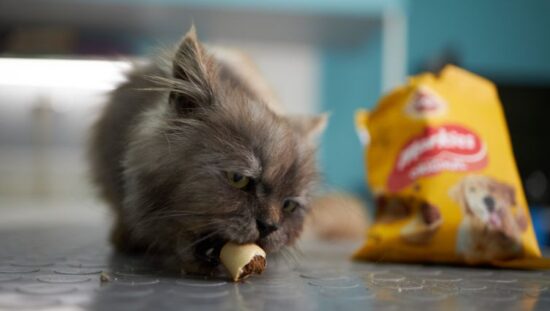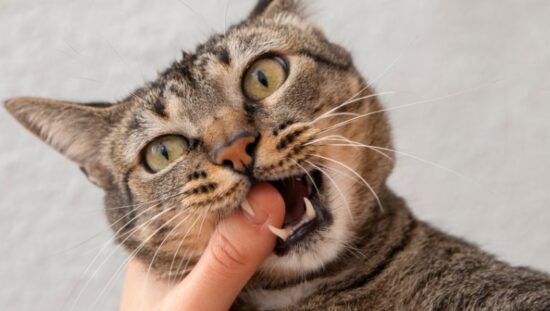When it gets hot outside, our cats can get sick from the heat. It’s important for us to know the signs and ways to stop this from happening.
In this guide, we’ll learn about how to tell if our cat has heatstroke and what we can do to keep them safe. By knowing these things, we can make sure our furry friends stay healthy and happy, especially during the summer months!

What Is Heatstroke in Cats?
Heatstroke in cats happens when their body gets too hot and can’t cool down. Cats can’t sweat like people do; they mostly cool off by panting and through their paw pads. When it’s very hot, or if they’re in a place with poor ventilation, their bodies can overheat.
This overheating can quickly lead to heatstroke, which is very serious. Heatstroke can harm a cat’s organs and, if not treated quickly, can be deadly. It needs fast action to cool the cat down and prevent further problems.
What Is the Difference Between Heatstroke and Heat Exhaustion?
Heatstroke and heat exhaustion are both caused by too much heat, but they are not the same.
Heat Exhaustion happens first. The cat’s temperature is about 103-104 F. This means the cat is getting too hot, but their body is still trying to cool down. They might be very tired, weak, and panting a lot. Heat exhaustion is serious, but it’s not as dangerous as heatstroke if you help your cat cool down quickly.
Heatstroke is much worse. Their body temperature rises above 104 F. It happens when the cat’s body can’t cool down anymore and starts to overheat. This can damage their organs and be life-threatening. Heatstroke needs emergency help right away to cool the cat down and keep them safe.
In short, heat exhaustion is the warning, and heatstroke is the emergency.
Causes of Heatstroke in Cats
Here are some common causes:
- Hot Weather: When it’s very hot outside, cats can overheat quickly, especially if they don’t have a cool place to rest.
- Poor Ventilation: Being in a space with little air movement, like a car or a small room without windows, can cause a cat to overheat. Never leave your cat in a parked car!
- Lack of Water: Without enough water, cats can’t stay hydrated and cool their bodies well.
- Too Much Activity: Playing or running around too much on a hot day can cause a cat to overheat.
- Thick Fur: Cats with long or thick fur can get hotter faster because their fur traps heat.
- Illness: Some health problems (obesity, respiratory issues, heart disease, age…) can make it harder for a cat to regulate their body temperature.
Signs and Symptoms of Heatstroke in Cats
As we mentioned before, heatstroke is a serious condition, and recognizing the signs early can save your cat’s life. Here are some common signs and symptoms to watch for:
- Panting: Cats normally don’t pant like dogs, so heavy panting is a clear sign something is wrong.
- Drooling: Drooling a lot or having too much saliva could mean your cat is getting too hot.
- Red or Pale Gums: Check your cat’s gums; if they are very red or pale, it can be a sign of heatstroke.
- Rapid Heartbeat: A faster-than-normal heartbeat can be a symptom.
- Weakness: Your cat might look tired, weak, or have trouble walking steadily or standing up.
- Vomiting and/or diarrhea: Vomiting and diarrhea can happen when a cat is suffering from heatstroke.
- Collapse: In very serious situations, a cat can collapse or become unconscious.
First Aid Measures
If you think your cat is having a heatstroke, acting quickly is important. You can follow these steps to give quick first aid:
- Move to a Cool Area: Carry your cat to a cooler place away from direct sunlight. A shaded area indoors with good airflow is perfect.
- Cool (Not Cold) Water: Use cool water, not cold, to dampen your cat’s fur. You can soak a towel or cloth in cool water and gently rub it over their body. Avoid using ice-cold water, as it can shock their system.
- Offer Water: You can try to get your cat to drink a little bit of cool water. Don’t make them drink, but make sure water is always there for them.
- Monitor: Keep a close eye on your cat’s condition. Watch for any changes in their behavior or symptoms.
- Seek Veterinary Care: Heatstroke is a medical emergency, and your cat will need professional treatment. Call your veterinarian immediately to get more advice and to set up urgent care.
Remember, even if your cat seems to recover after first aid measures, it’s still important to contact your vet. Heatstroke might hurt your cat’s insides, even if you can’t see it right away. Getting help from a vet quickly helps your cat get better and stay healthy in the long run.
Treatment Options for Heatstroke in Cats
When a cat is suffering from heatstroke, quick and appropriate treatment is important to prevent further complications. Here are the common treatment options:
- Cooling Measures: Veterinarians may use different methods to lower the cat’s body temperature slowly. They often put cool (not cold) towels on the body, and they also use fans to help air circulate.
- Intravenous Fluids: Cats with heatstroke often become dehydrated, so they usually need intravenous fluids to rehydrate and restore electrolyte balance.
- Monitoring Vital Signs: Veterinarians will closely watch the cat’s temperature, heart rate, and breathing, to check how they’re doing and see how they’re reacting to treatment.
- Oxygen Therapy: In very serious cases, cats might need extra oxygen to make sure their tissues get enough oxygen.
- Medications: Vets could also give them medicine to manage any other problems that come up, like seizures or damage to their organs.
- Supportive Care: Cats getting better from heatstroke might need extra help, like rest, a calm place, and a cozy environment, to help them heal.
- Follow-Up Care: After the first treatment, vets might suggest more visits to check on how the cat is doing and make sure there are no lasting problems.
Prevention Tips
Preventing heatstroke in cats is key to keeping them safe and healthy, especially during summer. Here are some simple tips to help protect your furry friend:
- Provide Shade: Make sure your cat has access to shady areas both indoors and outdoors where they can escape from direct sunlight.
- Fresh Water: Always give them plenty of fresh, clean water to drink. You can put additional water bowls around your home, especially during hot weather.
- Indoor Environment: Keep your home cool by using fans, air conditioning, or opening windows to promote airflow. Avoid leaving your cat in rooms with poor ventilation or direct sunlight.
- Limit Outdoor Time: During the hottest parts of the day, try to keep your cat indoors where it’s cooler. If your cat goes outside, keep an eye on them and help them find shady spots to stay cool.
- Cooling Options: You can give your cat cool places to lie down, like tiles or a cool mat. Also, try giving them frozen treats or toys to help them cool off.
- Grooming: Brushing your cat regularly helps get rid of extra fur, which can keep them cooler when it’s hot. But don’t shave your cat because it can make it harder for them to control their body temperature.
- Never Leave in a Car: Never leave your cat unattended in a car, even for a short time. Cars can quickly heat up to dangerous temperatures, even with the windows cracked.
- Travel Safely: If you’re traveling with your cat, make sure they have access to water and ventilation in their carrier. Avoid putting the carrier in direct sunlight.
For more tips on keeping your cat cool and comfortable during the summer months, check out our blog post How to Keep Cats Cool in Summer: Best Tips and Strategies.
Recovery and Management of Heatstroke in Cats
Here’s what you can do to help your furry friend recover and manage their health after the heatstroke:
- Veterinary Follow-Up: Plan another visit to the vet to check how your cat is doing and see how they’re getting better. Your vet can give you more advice on what your cat needs while they’re getting better.
- Rest and Relaxation: Let your cat rest in a quiet, cool place. Minimize activity to prevent additional stress on their body as they recover.
- Hydration: Make sure your cat has access to fresh water at all times to stay hydrated. Keep an eye on how much water your cat drinks because not drinking enough can make heatstroke symptoms worse.
- Nutrition: Give your cat good food to help them get better. If they’re not eating or seem less hungry, ask your vet for help with feeding them the right way.
- Medication: Make sure to follow the instructions for any medicine your vet gives you. Give the medicine exactly how they tell you to, and keep an eye on your cat for any bad reactions.
- Temperature Monitoring: Keep an eye on your cat’s body temperature and watch for signs of overheating, especially during hot weather. If needed, help your cat cool down by wetting their fur with cool water.
- Observation: Watch your cat closely for any changes in behavior, appetite, or symptoms. Report any concerns to your vet.
- Prevention Strategies: Be proactive in stopping heatstroke from happening again by doing things like giving shade, clean water, and keeping the inside cool, just like we mentioned before.
- Emergency Preparedness: Learn about the signs of heatstroke and have a plan ready for emergencies. Knowing what to do can help you act fast and get your cat the help they need quickly.
Conclusion
Heatstroke is a serious problem for cats, especially during hot weather. It happens when they get too hot and can’t cool down properly. Recognizing the signs and acting fast can save their lives. By providing shade, fresh water, and a cool environment, you can prevent heatstroke. If your cat does get heatstroke, quick action and veterinary care are crucial for their recovery. With proper care and attention, you can keep your furry friend safe and healthy all year round.



